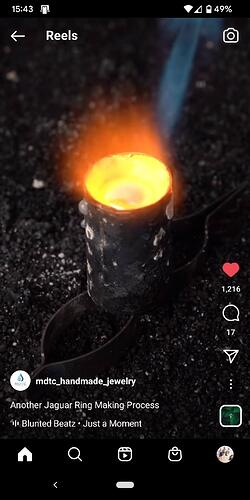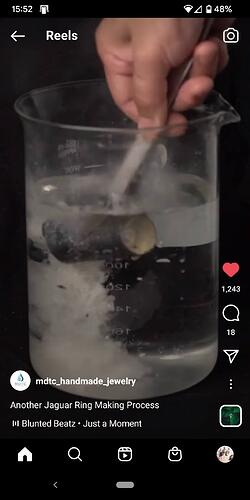First, research the gasoline archives for “pressure casting” various other names may have been used, including steam casting.
I didn’t watch the video, but frlm your description, you might be missing some key details. First, note that the flask is higher than normal for that diameter in order to give room for the carved out " melting crucible". Next, the sprue to the model breaks into multiple smaller diameter sprues, so that each wax wire entering the crucible is smaller or equal to 14 Guage (some experimental checking might be needed, depending on your metal. 14 Ga works for sterling. It looks a bit like a fork. This is so that the surface tension of the molten metal keeps it from flowing into the sprues until you force it. Larger sprues would mean holes large enough that metal would start to flow in, but then would freeze, preventing the casting step from forcing metal in.
The flask gets invested, then once set, use a spoon or similar to carve a hemispheric melting opening. When you carve down to the multiple sprues, you’ll see the series of small wax wires. Take care not to carve down to where they come together.
Now you have to burn out the wax from the investment. This probably cannot be done just with a torch, as properly burning out all the wax takes at least an hour, and usually several hours. Normally, you need a kiln. But if you dont have one, line a red clay normal flower pot with aluminum foil, several layers, then a lining if furnace tape. Grey, fire resistant. Used to be asbestos. Not sure what it us now, but looks the same. Comes in rolls. Wet it, then form it into the inside of the pot. Then another layer of aluminum foil. Be sure the hole at the bottom of the pot is still open. The pot size should comfortably fit over your flask with a bit of space, but not a lot more.
Now, with permission from anyone else who uses that stove or kitchen, place the flask upside down (crucible at the bottom) directly on the center of the electric coil or the gas burner grate. (Gas burners work better, but electric stoves work too. Cover the flask with the inverted flower pot, turn on the kitchen exhaust fan, then turn the stove burner on high. Walk away for two or three hours. If you come to check, dont lift the pot, but peek in the hole in the pot. The flask should be glowing a dull red/orange. After a couple hours, you can lift the pot, flip the flask over, and observe,that the sprue holes are empty and chalky white. If there is grey or black, leave it sprues facing up under the flower pot on the burner, still on high, for another hour or two. While waiting, if you have not done so already, make your high tech casting machine. Meaning, a metal jar lid big enough to comfortably fit over the flask end, screwed to a piece of wood dowel for a handle, and fill the end of the lid with about ac1/4 inch of newspaper, which you then wet with water till its sopping wet, but not dripping.
Now, once the flask appears to be fully and cleanly burned out, shut off the stone and set the flower pot aside. Set a fireproof soldering pad on the stove so the flask won’t rock or wobble. Let it cool until, with the lights off, it no longer glows.
Now put your metal into that crucible hollow, and melt it with your torch. Once molten, add a little borax or boric acid flux. Make sure the metal is fully molten all the way through, the holding the dowel handle firmly, bring the wet paper and jar lid firmly through the flame and down onto the flask. The heat from the metal and flask instantly forms steam, and since you are pressing that lid firmly, it quickly builds pressure which forces the metal through the sprues into the mold cavity. After about 30 seconds, you can remove the jar lid and let the whole thing cool until the button no longer glows, and perhaps a bit more. Then quench the flask to retrieve your casting.
The quality if castings done like this can be just as good as those with better equipment, but the lack of temperature controls make it unpredictable. Your failure or success rate will depend on luck, on how consistently you repeat things, and on the whims of whatever metals Gods you make sacrifices to. And on whether you share that kitchen and stove with anyone else.
Peter




